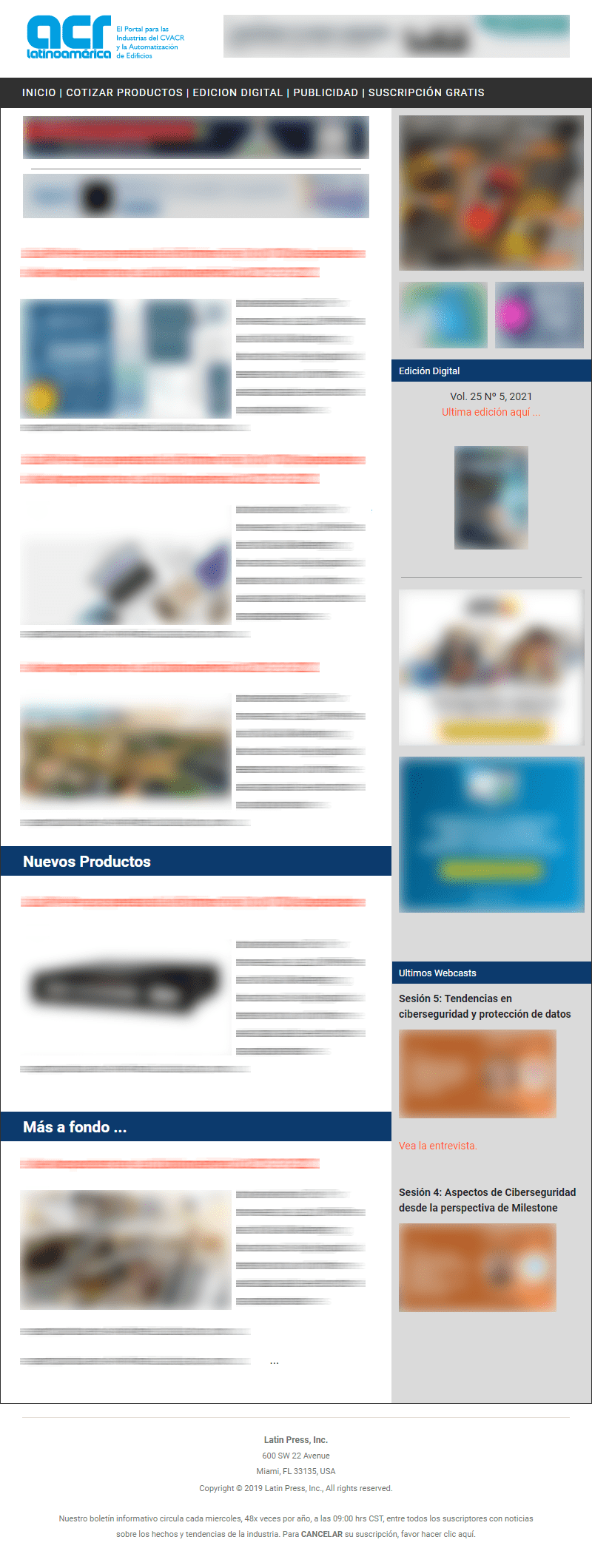 International. Manufacturers are increasingly moving towards cost-effective, lower GWP alternatives to R410A in air conditioning applications. Danfoss conducted an analysis in which it explored the uses, advantages and disadvantages of the following alternatives: R32, R452B and R454B.
International. Manufacturers are increasingly moving towards cost-effective, lower GWP alternatives to R410A in air conditioning applications. Danfoss conducted an analysis in which it explored the uses, advantages and disadvantages of the following alternatives: R32, R452B and R454B.
The 2016 Kigali Amendment to the Montreal Protocol, and other restrictions, such as Europe's fluorinated gas regulations, have initiated the phase-out of R410A and other HFCs. The goal is to reduce direct carbon emissions and curb global warming.
The list of suitable replacements for these refrigerants is considerable. R32, R454B and R452B have their advantages. All of them are low GWP alternatives with interesting performance and efficiency capabilities.
Why air conditioners are replacing R410A with R32, R452B and R454B in the medium term.
The phase-out of R410A has already begun in Europe and North America, as well as in other countries such as Australia and New Zealand.
This quota mechanism is already affecting prices and availability. This, along with national policies taxing CO2 equivalence, has led to a growing demand for lower GWP alternatives.
Many low GWP refrigerants are available. R32 is a popular choice, due to its availability, performance, and efficiency, but R454B and R452B also offer convenience and potentially low system qualification costs. Other alternatives are also entering the market.
Overcoming the challenges of low GWP refrigerants
Low GWP refrigerants are generally flammable, which means safety standards and building codes need to be revised to reflect their potential impact.
This flammability will sometimes result in restrictions on where the systems can be installed or the maximum load, and therefore the capacity, that can be used. It also means that components must be compatible with flammable refrigerants, to ensure that they cannot be considered a source of ignition.
The right technology and components for low GWP refrigerants are well developed and have been available on the market since 2018, allowing OEMs to start creating compatible systems.
However, there is currently no perfect replacement for the R410A. With any lower GWP alternative, OEMs must deal with at least one inconvenience, be it flammability, availability, or material compatibility. In each case, the challenge is to find the best compromise for your users, goals and designs.
Although the refrigerant transition means that component and system optimizations are necessary, improvements in cost and performance can be significant in the medium term.
R410A replacement: flammability of R32, R452B and R454B
R32, R452B and R454B replacements for R410A are classified as 2L: mildly flammable.
These A2L refrigerants offer only moderate limitations in charge of direct expansion systems and no limitations for indirect expansion systems such as chillers, when located outdoors or in technical rooms. But regardless of your location, local safety regulations and building codes must always be adhered to.
R32, R452B and R454B all have a low toxicity class, "A", as do R410A and R22.
What are the best alternatives to R410A in commercial air conditioning and heat pumps?
R32, R452B and R454B are good choices for air conditioning systems. However, the best option varies by application. Ultra-low GWP refrigerants will be important in the long run.
Scroll coolers, roof units and air handling units
Medium term: R32, R452B, R454B
Longest term: R1234ze, R515B, R516A
Large centrifugal and screw coolers (up to 1.5 MW)
Medium term: R513A, R1234ze, R515B
Longest term: R1234ze, R515B,
Very large centrifugal and screw coolers (more than 1.5 MW)
Medium term: R1233zd, R1336mzz (Z), R514A
Longest term: R1233zd, R1336mzz (Z), R514A
Dedicated heat pumps (air to water)
Medium term: R454C, R290
Longest term: R454C, R290
Dedicated heat pumps (brine to water or water to water)
Medium term: R454C, R454B
Longest term: R454C
A/A Systems (Rooftops, Air Handling Units, VRF, Split Systems, CRAC)
Medium term: R410A, R32 or R454B (with new system architecture), R466 if feasible
Longer term: R32 or R454B (with new system architecture), R466 if feasible, and perhaps a change to a lower density if needed
How does the performance of the R32, R452B and R454B system compare to the R410A?
As a direct replacement for the R410A system, R32 has around 10% more capacity. As a result, a new system built for R32 will offer greater cooling capacity or require lower displacement compressors to achieve the same capacity. Efficiency gains are expected over the R410A, provided that the system design and components have been optimized for the R32.
However, the R32 has a high discharge temperature that can limit its operating environment unless the problem is resolved by design or some kind of injection.
R452B is the closest direct equivalent to R410A in terms of capacity and efficiency. R454B offers slightly lower capacity, but has the benefit of even lower GWP. Both refrigerants allow the fastest conversion since R410A.
What will R410A's transition look like in the real world in the medium term?
If a system redesign is necessary, the R32 is a good choice with a good $/TR or €/kW ratio. However, for applications that are already very energy efficient, a simple addition with R452B or R454B will minimize system redesign costs, allowing customization of the last line in some cases. For end users and building owners, they are all very viable options.
R32 in an air conditioning cooler: impact on system design
Requires redesign and sizing for optimal performance
You need various components and configurations to be adjusted, including expansion valve, liquid line pipe, suction line, solenoid valve, and discharge line
The compressor may be oversized and may need to be changed
GWP is AR5-677 / 675-AR5 (measured in AR4)
R452B or R454B in an air conditioning cooler: impact on system design
Designed to be close to an walk-in alternative
Potential flexibility of multiple refrigerants
GWP is 698 for R452B and 466 for R454B, which means it could be a longer-term solution
High pressure transition
Summary: R410A alternatives work
In a new application, R32 stands out as the most efficient and best-performing alternative to R410A, but it needs optimization. R452B and R454B offer easier direct replacement, along with the flexibility of a multi-refrigerant system. The R454B also has a lower GWP, meaning it could remain in use for longer as standards progress.
The choice of refrigerant for each application should be made on a case-by-case basis. When replacing the R410A, here's what you need to know:
R452B: same capacity as R410A, with slightly better efficiency
R454B: slightly lower capacity than R410A but better efficiency; lower GWP
R32: Better efficiency and around 10% more capacity than R410A, depending on application and system design
Source: Danfoss.















Muy agradecido...